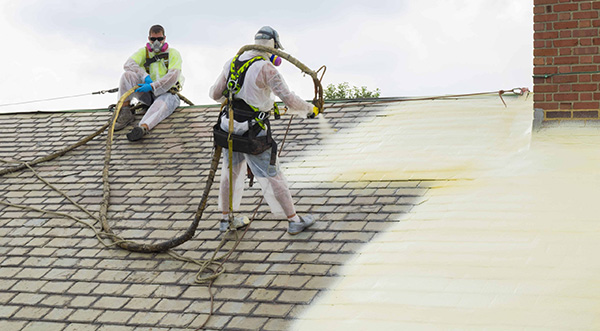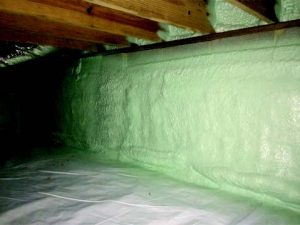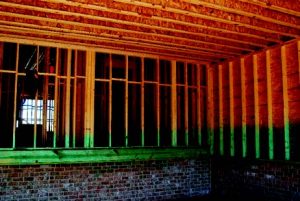There has been an emphasis recently on how spray foam affects the ability to identify and treat termites in homes, mostly in the Southern region of the US. It’s important to know that to ensure a safe and adequately cared for home, that proper procedures should be followed before and after your SPF installation.
It is crucial for contractors, building design professionals, and homeowners to understand termites and how to apply SPF insulation to facilitate termite inspection and control. In this article, we will cover the basics that you need to know about spray foam, termites and what you can do to protect your building.
What is Spray Foam?
Spray Polyurethane Foam, aka SPF, is a material that made by combining two liquids (a polyol/resin and an isocyanate) as it’s sprayed onto the existing surface. It creates a foam that expands to form a seamless surface. When the foam has expanded, this layer can be between 1 and 1.5 inches in thickness.

SPF For Roofing
When the installation is complete, it will create a durable, waterproof renewable foam roof covering. SPF roofing is not the most known type of roofing material; the technology has been around since the 1960s for industrial, commercial, and residential facilities.
SPF For Insulation
SPF helps seal cracks, gaps and penetrations in the building envelope to mitigate air leakage and deter infestation by a variety of insects, rodents, and other pests where it is applied.
SPF is often used by builders of new homes and weatherization contractors in existing homes at the framing-foundation area and is often regarded as an especially cost-effective and reliable means to insulate and air seal these critical areas.
Do Termites Eat Spray Foam?
SPF is not known to attract, nor does it provide a food source for termites; however, it can be accompanied using new technologies when inspecting for termite infestations.
Termites consume cellulose, plant-based material– including leaves, compost, wood piles, and of most significant concern, wood components and furnishings of a home. Experts estimate that throughout about five months, a group of around 60,000 termites can eat the equivalent of one foot of a 2×4 beam.
How To Check For Termites with Spray Foam
If termites aren’t attracted and don’t eat spray foam, then what’s the problem?
When termites make a home in the wood of a building, they create pathways inside the wood they are eating. The concern with permanent insulation (spray foam) is that it will be more difficult for a pest control company to do visual inspections for termites regularly. If your pest control company is not conducting proper inspections, you can develop a termite problem right under your feet.
But there are ways to utilize newer technology to check for termites when you have spray foam insulation.

Termite Inspection Strip
Some states including North Carolina, Georgia, and Alabama have modified the model code to include a termite inspection strip above and below the top of the foundation wall to expose the sill plate and lower band/rim joist for visual inspection.
Subfloor Insulation
SPF can be applied directly below the subfloor and leaving the crawlspace vented. This application enables complete access to the band joist and sill plate areas for termite inspections
Infrared Termite Inspection
A pest control company or building inspector can utilize an infrared camera to see right through the spray foam and target any termites in behind the foam. As a roofing contractor, we use an infrared camera to detect water under the roof surface: read more here.
Termite Sniffing Dog
Specially selected and trained sniffing dogs can be brought into a facility to sniff out termite infestations. The University of Florida Department of Entomology has a research project to establish to the reliability of dogs being about to sniff out bed bugs, termites and other pests.
How To Prevent Termites

The International Residential Code and International Building Code both address the prevention of termites, the method of prevention depends on your area.
- Borate treatment of select wood members – Using specially treated wood that is toxic to insects, usually blue in color.
- Termiticide application on the surrounding ground areas – Adding a liquid pesticide to the soil around your home.
- Termite baiting systems – Traps that include tempting wood for the termites that is combined with a pesticide that kills the termites, usually installed in the ground outside your home.
- Physical barriers – Sheet metal or termite membrane installed in the foundation of the building to block termites from reaching the wood, without pesticides.
It is always a good idea to have your building inspected before installing spray foam insulation or roofing. This inspection can be by a building inspector or contractor. If there are any signs of termite damage, it’s best to repair the area and treat of termites BEFORE installing spray foam. You want to make sure you hire an SPF contractor that is accredited by a reliable organization such as the Spray Polyurethane Foam Alliance.


